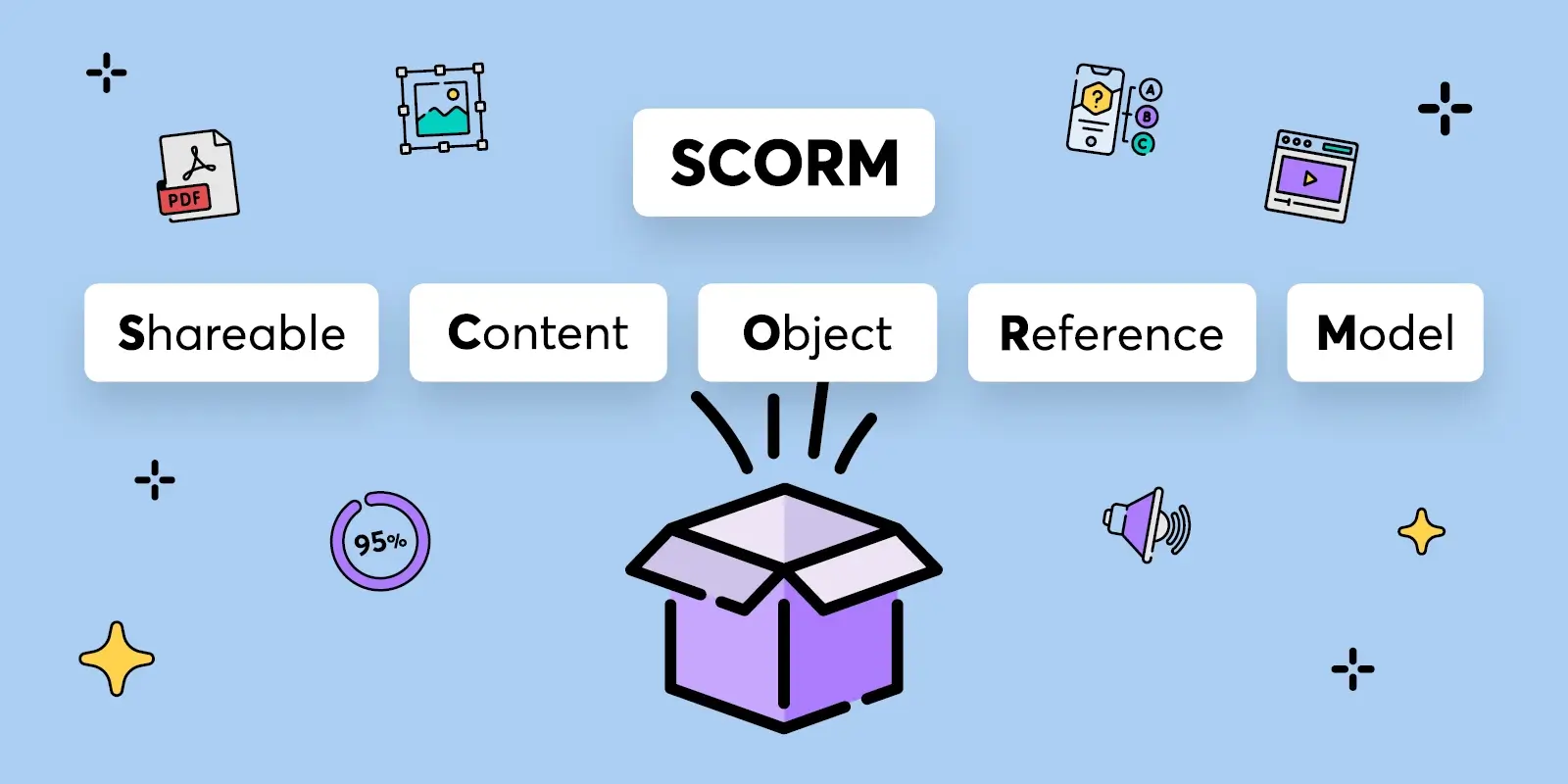A flexible eLearning format
The world of eLearning has come a long way since the days of CD-ROMs and PowerPoints. In an ever connected and increasingly digital society, interactive and immersive online courses are the norm, and the standard that enables this rich learning experience is known as SCORM – Shareable Content Object Reference Model.
What is SCORM?
SCORM is a collection of standards and specifications for eLearning that governs how online learning content and Learning Management Systems (LMS) interact with each other.
These specifications bundle and build a file similar to a zip file with multiple files inside, written in a language a scorm-compliant LMS will understand.
There was a need to simplify these specifications, and to ensure that when someone builds a course for Company A, it can be exported to work and talk to the systems found on Company B. Or, if anything, work and talk to their own internal systems.
In simpler terms, SCORM ensures that learning content from different authors works well with various LMS platforms. It is like a universal language that both the learning content and the LMS understand, making it possible for them to work seamlessly together.
SCORM was developed by the Advanced Distributed Learning (ADL) Initiative, which was sponsored by the US Department of Defense to standardise and modernise their training procedures. SCORM standards facilitate the communication between elearning authoring tools and learning management systems.
Components of SCORM
SCORM consists of two major components: the SCORM Content Aggregation Model (CAM) and the Run-Time Environment (RTE).
- SCORM Content Aggregation Model (CAM): This component sets guidelines for content packaging within a SCORM-compliant system. It defines how to create “Sharable Content Objects (SCOs)” that can be reused in different systems and contexts. An SCO is a unit of online training material, which could be a video, a single html webpage, or any other piece of content.
- SCORM Run-Time Environment (RTE): The RTE handles how SCOs communicate with the LMS at run-time. It defines the data that can be exchanged between content and LMS, such as user performance data (quiz scores, time spent on the module, etc.), and functions like bookmarking, which allows learners to pick up from where they left off.
Benefits of SCORM
The primary advantage of SCORM is its promise of interoperability. Before SCORM, developing online learning content was a gamble. A course created for one LMS might not work in another, leading to a lot of wasted time, effort, and money. SCORM standardises how courses are created, allowing them to run on any SCORM-compliant LMS.
The second best advantage is the sheer flexibility and ingenious creativity of the types of interactions you can bake into it.
SCORM also provides a consistent way to track and report learners’ progress and performance.
Lastly, because SCORM is so widely used, there’s a large community of eLearning professionals that can provide support and resources. This makes it easier to learn, troubleshoot issues, and improve upon existing content.
The Future of SCORM
Despite its benefits, SCORM does come with limitations. We found some during a project we recently completed for The Warehouse Group which relied on an old version of SCORM.
This has led to the development of a new standard, xAPI (Experience API, also known as Tin Can API), which can capture learning experiences from a wider range of sources. As the landscape of eLearning continues to evolve, it will be interesting to see how SCORM adapts or whether it eventually gives way to newer standards like xAPI. Regardless, SCORM’s impact on making eLearning content accessible, interoperable, and effective will continue to be felt for years to come.
Rifft Solutions can develop bespoke, custom eLearning training content and have increasingly done so for a wide range of companies. Contact us today to discuss your requirements and what we can do for you.

